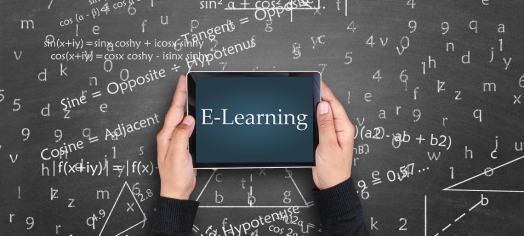In the digital age, the accessibility of education has become a pressing concern, especially as societies strive to achieve their long-term goals.
As we embark on the journey towards Vision 2030, a transformative agenda aimed at shaping a prosperous and sustainable future, the importance of elearning accessibility cannot be overstated.
E-learning has emerged as a powerful tool that can revolutionize education by breaking down geographical barriers and reaching a wider audience.
However, to truly realize the potential of e-learning and ensure inclusivity, it is crucial to address the needs of individuals with visual impairments.
This introductory guide explores the significance of elearning accessibility and highlights the best practices that can be implemented to support Vision 2030.
By adopting these practices, educational institutions, policymakers, and e-learning platforms can create an inclusive environment where individuals with visual impairments can fully engage in learning experiences.
By leveraging accessibility tools and techniques, such as screen reader technology and accessible content design, educational materials can be made accessible to all learners, regardless of their visual abilities.
By prioritizing accessibility in learning, we can collectively work towards a more inclusive and equitable society, ultimately paving the way for the successful realization of Vision 2030.
What Is Accessibility In Learning And Development?

According to a survey, 42% of companies have reported a revenue boost as a result of implementing E-learning.
Accessibility in learning and development refers to the design and delivery of educational materials and experiences that are inclusive and accessible to individuals with diverse needs and abilities.
It aims to ensure that everyone, including those with disabilities, can effectively engage in the learning process and benefit from educational content, regardless of their physical, sensory, or cognitive abilities.
In the context of e-learning, accessibility involves making digital learning materials, platforms, and technologies usable and understandable for all learners.
This includes providing alternative formats, such as audio descriptions or transcripts, for individuals with visual impairments, captions for those with hearing impairments, and accommodating learners with mobility or cognitive disabilities through intuitive navigation and clear instructions.
Accessibility in learning and development goes beyond compliance with legal requirements.
It is a commitment to creating an inclusive learning environment that values diversity and provides equal opportunities for all learners.
By adopting elearning accessibility principles, instructional designers, educators, and learning professionals can ensure that their materials and instructional methods are accessible to a wide range of learners, promoting equitable access to education and fostering a positive and inclusive learning experience for all.
Importance Of Accessibility In Education

The importance of accessibility in education cannot be overstated, as it plays a crucial role in ensuring equal opportunities and inclusive learning environments for all individuals.
Here are some key reasons why accessibility is essential in education:
1. Equal Access
Accessibility ensures that individuals with disabilities or diverse needs have equal access to educational resources, materials, and opportunities.
It eliminates barriers that may otherwise prevent them from fully participating in the learning process.
2. Inclusion
By making education accessible, it promotes inclusivity by embracing the diversity of learners.
It recognizes and values the unique abilities and needs of every individual, fostering a sense of belonging and creating a supportive learning environment.
3. Empowerment
Accessible education empowers learners to reach their full potential.
It enables them to acquire knowledge, develop skills, and participate actively in academic and professional settings, leading to improved educational outcomes and increased opportunities for personal growth and success.
A significant 20% improvement in productivity has been observed among employees who have gained relevant skills through e-learning modules and lessons.
4. Compliance With Laws And Policies
Accessibility is often mandated by laws and policies, such as the Americans with Disabilities Act (ADA) in the United States.
Educational institutions have a legal and ethical responsibility to provide reasonable accommodations and ensure accessibility for all students.
5. Innovation And Technology
Accessibility drives innovation in educational technologies and instructional methods.
It encourages the development of inclusive tools, platforms, and approaches that benefit not only individuals with disabilities but also enhance the learning experience for all learners.
6. Social Impact
Accessible education promotes social equity and breaks down societal barriers.
It challenges stigmas associated with disabilities and creates a more inclusive society that values diversity, respects differences, and promotes equal opportunities for everyone.
In summary, accessibility in education is crucial for ensuring equal access, promoting inclusion, empowering learners, complying with laws, driving innovation, and making a positive social impact.
By prioritizing accessibility, educational institutions can create environments that embrace diversity and provide educational experiences that are meaningful, inclusive, and transformative for all learners.
Best Practices For Accessibility In Learning

In the context of Vision 2030, where the goal is to shape a prosperous and sustainable future, it is important to prioritize accessibility in learning to ensure inclusivity and equal opportunities for all learners.
Here are some best practices for accessibility in learning that align with the objectives of Vision 2030:
1. Conduct Accessibility Audits
Regularly assess the accessibility of your e-learning platforms, materials, and technologies.
Conduct comprehensive audits to identify barriers and gaps in accessibility, and develop strategies to address them effectively.
2. Collaborate With Experts
Work closely with accessibility experts, disability service offices, and organizations that specialize in accessibility.
Engage in partnerships to gain insights and guidance on implementing best practices for accessibility in learning.
3. Provide Training And Awareness
Conduct training sessions for instructors, educational professionals, and content creators to raise awareness about accessibility principles and best practices.
Equip them with the knowledge and skills necessary to design and deliver inclusive learning experiences.
4. Involve Learners With Disabilities
Involve learners with disabilities in the design and development of accessibility initiatives.
Seek their feedback and insights to better understand their needs and perspectives, ensuring that accessibility measures are truly effective and inclusive.
5. Ensure Compatibility With Assistive Technologies
Ensure that your e-learning platforms and materials are compatible with a wide range of assistive technologies.
Test and verify compatibility with screen readers, alternative input devices, and other assistive tools to guarantee a seamless experience for learners with disabilities.
6. Engage In Continuous Improvement
Establish a process of continuous improvement for accessibility in learning.
Regularly review and update accessibility guidelines, policies, and practices to stay abreast of evolving technologies and standards.
By adhering to these best practices, educational institutions and stakeholders can make significant strides toward achieving the vision of an inclusive and accessible learning environment by 2030.
These practices will help promote equal access to education, foster innovation, and create a more equitable society where every learner can thrive and contribute to the goals of Vision 2030.
Transform Workplace Learning With Oreed: Empower Your Workforce For Success
1. Gain Valuable Insights With Oreed's Education Intelligence Platform
Unlock a world of enhanced learning potential in your workplace with Oreed!
Our all-in-one education intelligence platform empowers you to optimize employee training and development through a range of powerful features.
With Oreed, you can gain a comprehensive understanding of your employees, enabling you to better gauge their unique training needs.
By leveraging valuable insights, you can make informed decisions and design targeted training programs that align with your organization's goals.
2. Tailor-Made Training And Courses For Maximum Impact
Say goodbye to generic, one-size-fits-all training programs.
Oreed offers tailor-made training and courses specifically designed to fit your organization's specific requirements.
Whether it's job-specific skills, leadership development, or technical proficiency, Oreed enables you to deliver customized learning experiences that resonate with your employees.
By addressing their individual needs and learning styles, you can enhance engagement and ensure greater knowledge retention.
3. Measure Training Effectiveness With Ease
Assessing the impact and effectiveness of your training is essential for continuous improvement.
Oreed's cutting-edge impact assessment feature allows you to measure the effectiveness of your training and courses with ease.
Monitor learner progress, evaluate outcomes, and gather valuable data to refine and optimize your training initiatives.
By analyzing the results, you can identify areas of improvement and make data-driven decisions to enhance the overall effectiveness of your training programs.
4. Embrace Personalized And Effective Workplace Learning
Oreed revolutionizes workplace learning by providing a more personalized and effective approach.
By tailoring training to individual needs and focusing on targeted competencies, you can maximize employee engagement, improve performance, and drive organizational success.
Experience a new era of workplace learning with Oreed and empower your employees to thrive and excel in their roles.
Unlock their full potential and watch your organization reach new heights of productivity and success.
5. Aligned With Vision 2030
This article highlights Vision 2030’s focus on human capital development, emphasizing the importance of continuous learning, reskilling, and upskilling.
It recognizes the need for Saudi Arabia's workforce to adapt to the rapidly evolving global landscape and remain competitive.
Oreed, an advanced education intelligence platform, aligns with this objective by offering solutions that optimize employee training and development.
It enables organizations to tailor training programs, measure effectiveness, and foster a culture of continuous learning.
By supporting Vision 2030's goals, Oreed contributes to the development of a skilled and adaptable workforce in Saudi Arabia, driving sustainable economic growth and success in the future.
So what are you waiting for? If you are planning to host an online event, book a demo with Oreed today and get a walk of all our features.
Promote lifelong learning through Oreed by experiencing the most powerful all-in-one training and development intelligent platform that streamlines all your organization's learning, training, and development activities in one place.
Final Thoughts
In conclusion, prioritizing elearning accessibility and implementing best practices are essential steps in realizing the goals of Vision 2030.
By ensuring equal access to education for individuals with visual impairments and other disabilities, we can create an inclusive learning environment that embraces diversity and promotes equal opportunities.
Best practices such as designing with Universal Design for Learning principles, providing accessible formats and navigation options, and measuring training effectiveness contribute to a more inclusive and effective e-learning experience.
Oreed's commitment to accessibility and its education intelligence platform aligns with the objectives of Vision 2030, empowering organizations to optimize employee training and development.
By embracing accessibility in learning and best practices, we can revolutionize education, unlock the full potential of learners, and pave the way for a prosperous and sustainable future envisioned in Vision 2030.
FAQs
1. How do you make digital learning accessible?
To make digital learning accessible, consider the following steps:
a) Provide alternative formats: Offer content in multiple formats such as text, audio, and video with captions, transcripts, and audio descriptions.
b) Ensure compatibility with assistive technologies: Ensure that e-learning platforms and materials are compatible with assistive technologies like screen readers, magnifiers, and alternative input devices.
c) Use clear and consistent navigation: Design intuitive navigation with clear headings, logical structure, and proper labeling.
d) Provide adjustable settings: Offer adjustable font sizes, color contrasts, and playback speed options.
e) Design accessible assessments: Ensure that assessments are designed to accommodate learners with disabilities.
2. What are the steps to create accessible e-content?
To create accessible e-content, consider the following steps:
a) Use structured content: Structure your content using headings, subheadings, lists, and paragraphs.
b) Provide alternative text: Add descriptive alt text to images, charts, and graphs.
c) Use accessible multimedia: Provide captions for videos, transcripts for audio content, and audio descriptions for visual elements.
d) Choose accessible color schemes: Use color combinations that provide sufficient contrast for readability.
e) Ensure keyboard accessibility: Ensure that all interactive elements can be accessed and operated using a keyboard alone.
By following these steps, you can enhance the accessibility of digital learning materials and ensure that individuals with disabilities can fully participate in online learning experiences.


![Learning Experience Platform Market Size [2024]](/cdn/1619638329_6089b83993722/1658391437_62d90b8d45216/1658391471_62d90baf0898f/1702465413_65798f85e1464/1702465413_65798f85e1078.jpeg)
![What is a Learning Experience Platform [2024 Full Guide]](/cdn/1619638329_6089b83993722/1658391437_62d90b8d45216/1658391471_62d90baf0898f/1702464014_65798a0ecf990/1702464014_65798a0ecf60a.jpeg)

